The 5 worst places to put a kettle in a kitchen, according to experts
It might be time to move your kettle elsewhere

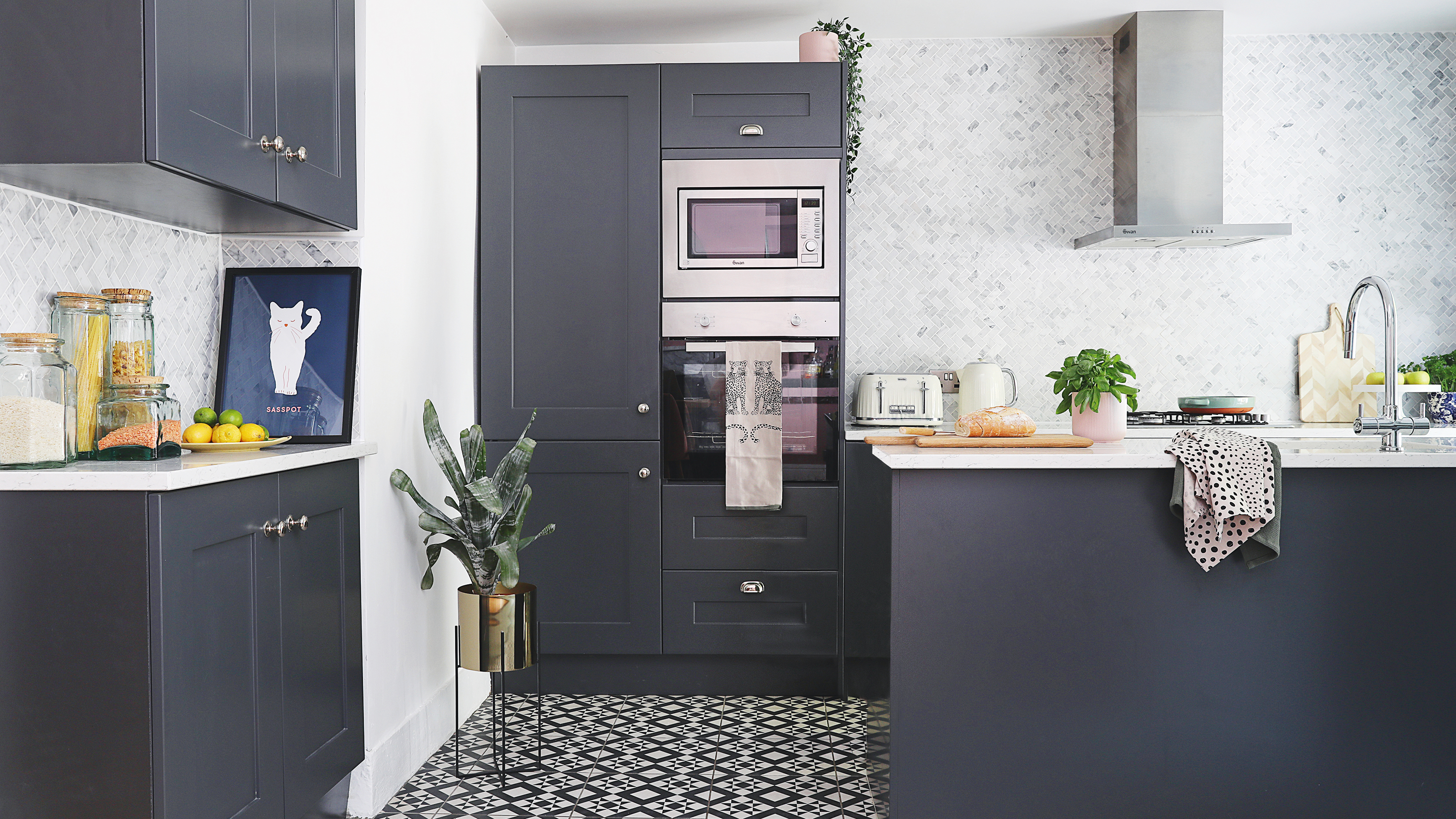
Too many homeowners are putting their homes in danger by having their kettle in the wrong place, which is why everyone should know the worst places to put a kettle in the kitchen. With this information, you can ensure you’re doing everything you can to protect your home and family.
For many, adding the best kettle to their kitchen is a necessity. But while this appliance is capable of brewing up the caffeine kick you may desperately need, unless you've splashed out on a designer option a kettle can be somewhat of an eyesore and ruin your kitchen ideas in an instant. As a result, many people hide them in corners, shove them to the back of their kitchen counters, and ultimately try to keep them out of sight.
However, the wrong placement of your kettle can have disastrous consequences you may not have considered before. From ruining your kitchen cabinets to killing your plants, these are the worst places to put a kettle in the kitchen.
The worst places to put a kettle
‘When placing appliances like kettles in the kitchen, it's essential to consider safety, functionality, and the specific conditions of the space to ensure a well-organised and safe kitchen environment,’ explains Alex Ventress, property expert at The Property Buying Company. But where exactly are the worst places to put a kettle?
1. Against a wall
Hands up if you push your kettle to the back of your kitchen counters in an effort to make your kitchen look less cluttered? We’re going to assume that most of you are waving your hands in the air like you just don’t care right now, but you really should care.
That’s because having a kettle up against a wall is one of the worst places for it… especially if you have painted walls.
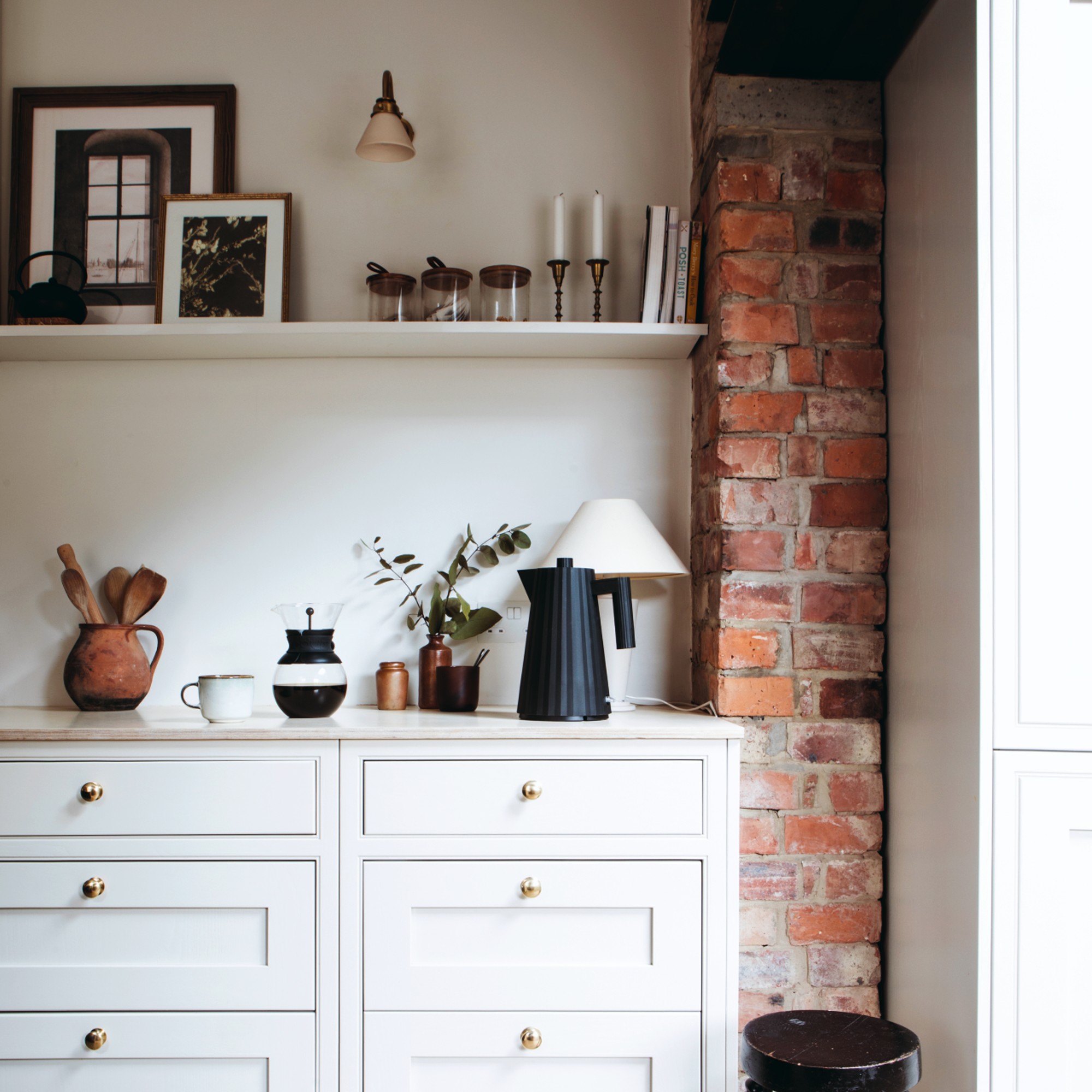
Alex explains, ‘Prolonged exposure to steam and moisture can lead to paint damage, especially if the paint is not specifically designed for high-moisture areas. If you plan to place the kettle near a wall, it's advisable to use moisture-resistant or kitchen/bathroom-specific paint. These types of paints are formulated to withstand the effects of humidity and moisture, reducing the likelihood of chipping and flaking over time.’
Sign up to our newsletter for style inspiration, real homes, project and garden advice and shopping know-how
Of course, it’s not a problem to put a kettle up against a wall if you have kitchen tiles.
2. Underneath your cabinets
Let’s be honest; kitchen cabinets aren’t cheap. They’re generally the most expensive things in the room, which is why it’s so important to clean your kitchen cabinets and keep up with general maintenance to increase their lifespan.
It’s also a good idea to keep your kettle away from your kitchen cabinets unless you want warped cabinets that are covered in mould.
Darren Watts, showroom design director at Wren Kitchens comments, 'Many people place their kettle underneath their overhead cupboards, however, this can cause irreparable damage to your kitchen. The steam and heat that is emitted when boiling a kettle can not only cause surface-level damage, such as discolouration and steam-burn, but it can also weaken the wood.'
'The heat and steam can also cause melamine cabinets to melt. Frequent use and therefore frequent heat bursts can also lead to warpage, fracturing and splintering, so it’s advised to place your kettle elsewhere.'
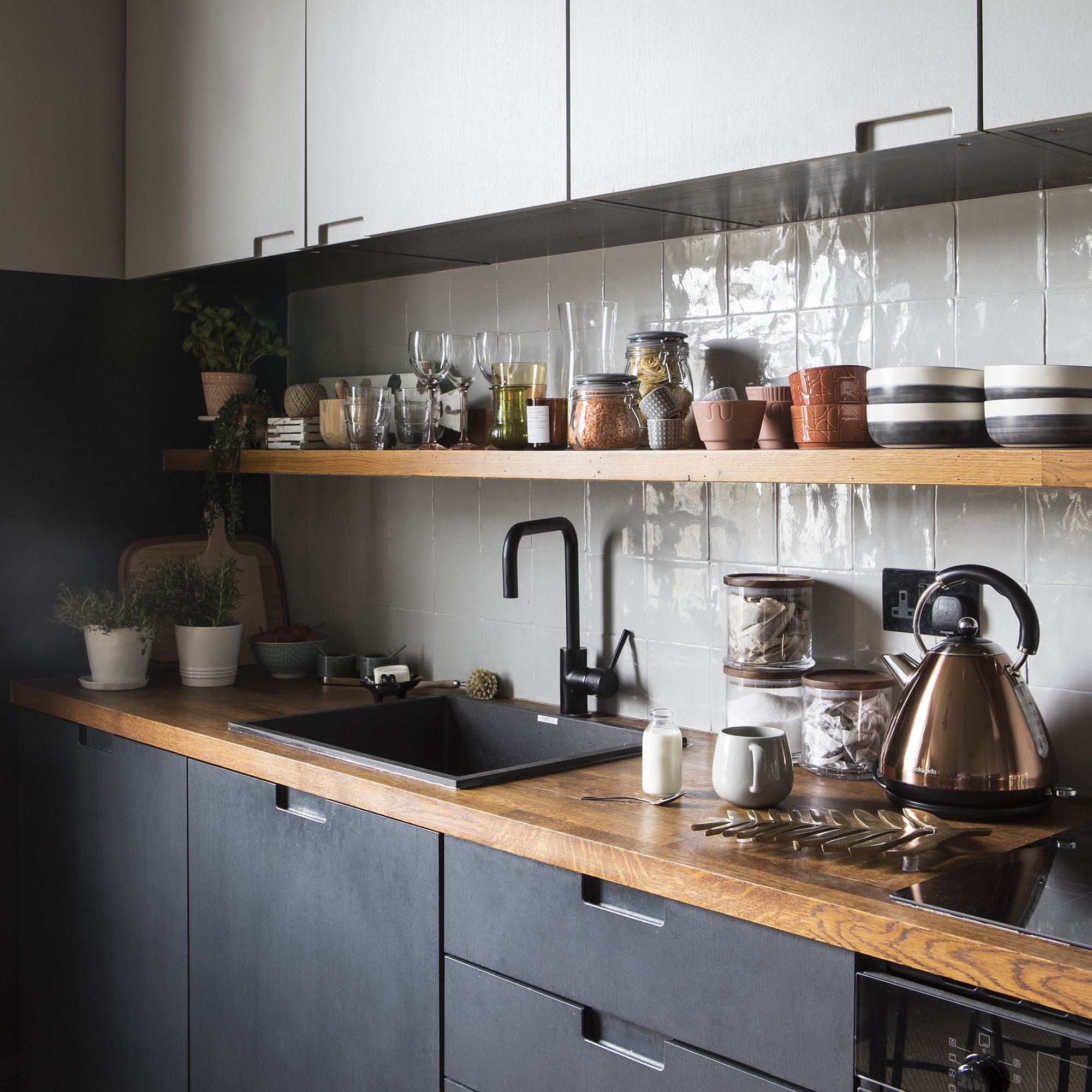
3. Next to a sink
You probably don’t need us to tell you that water and electricity don’t mix, which is pretty ironic when the only thing you put inside of a kettle is water. Nevertheless, you should never put your kettle next to a sink or another water source for that exact reason.
'People often place their kettle near the sink for the convenience of quick filling. However, keeping your kettle away from water sources is important for ensuring safety and preventing electrical damage in your home,’ explains Karl Bantleman, Head of Digital at Direct365.
‘As water is a good conductor of electricity, if the electrical components of the kettle come into contact with water, it can create a path for the current to flow, leading to electric shock hazards.’
But that’s not all. Karl adds, ‘If the plug, socket or cord of your kettle gets wet, this can cause a short circuit, causing the current to flow in the wrong direction and therefore leading to malfunctions, damage to the appliance, or even fire.’
4. Near your plants
There are so many amazing kitchen plant ideas out there, and many people choose to fill their kitchens with greenery that can boost air quality and even be eaten.
And while we’d always recommend adding more plants to your home, you need to be careful if you’re adding more plants to your kitchen. In fact, you should keep them as far away from your kettle as possible.
Steve Chilton, garden expert at LeisureBench, explains, ‘Excessive exposure to steam and water from the kettle can cause moisture buildup on leaves and over-saturated soil that could lead to issues such as rot, fungal infections and even death of the plant.’

‘You might first notice that the plant is too damp by the tell-tale signs of drooping leaves, browning leaves, infestations, mould growth, and general discolouration of the plant.’
‘Remember that a kettle creates an environment that might be very different to what the plant itself requires to grow and bloom. High humidity levels, moisture levels and temperature can be three things that an indoor plant doesn't need.'
5. Under a smoke alarm
A smoke alarm is a necessary addition to your home, and while smoke alarms are generally not installed in a kitchen, many are installed nearby.
This can cause all kinds of problems if you have a particularly old or sensitive smoke alarm, as these devices can often confuse dense moisture particles with smoke. If that’s the case, you may find that the smoke alarm sounds every time you boil the kettle.
‘The worst place to put a kettle in the kitchen would be directly under or very close to a smoke detector or a fire alarm. Placing a kettle in such proximity may lead to false alarms when the steam generated during boiling triggers the smoke detector. This can be not only annoying but also potentially dangerous if it causes people to ignore alarms in the future,’ adds Alex.
This is also something to consider if you have a coffee bar outside of your kitchen, as you may have to move it elsewhere.
Kettles you will want on display
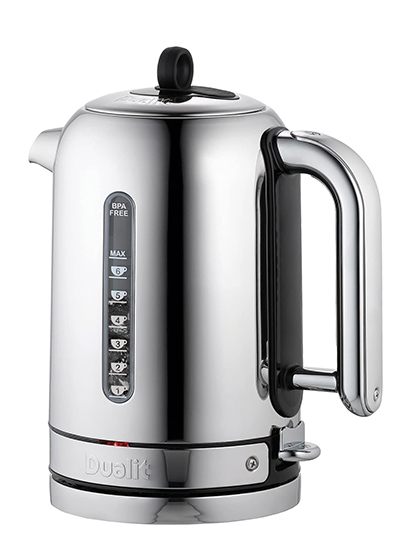
The Dualit Classic Kettle is an icon for a reason, it's elegant design, not to mention sustainable credentials will mean you want to show it off.

One of the most coveted kettles on the market, the Smeg retro kettle is available in a regular and small size. There is also a smorgasbord of colours for you to choose from.
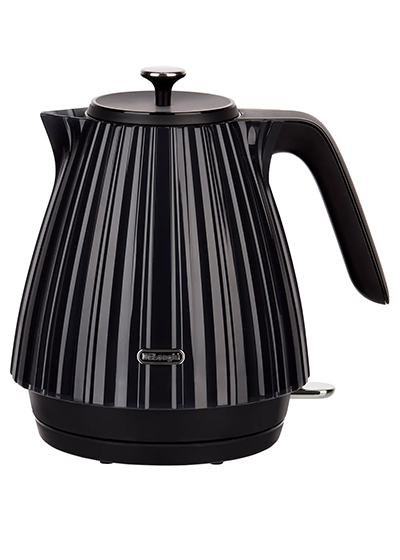
This kettle has become an Ideal Home favourite, making a serious design statement but with a reasonable price tag.
FAQs
Where should a kettle be in a kitchen?
Ideally, you should put your kettle on an open worktop that doesn’t have any cabinets above it. Some people find it handy to have a kettle near to the fridge, so they don’t have to walk too far to make a cup of tea.
Can you put a kettle under a cupboard?
You should try to avoid this if you can. The steam that comes from the kettle can not only cause warping in the cabinets but also cause the paint to peel and create mould in and around the cupboard.
Thea Whyte, Small Appliances Expert at AO.com, says, ‘Remember to allow your kettle proper ventilation so that it doesn’t overheat the coil and cause damage.’
Should a kettle be next to a sink?
No, definitely not. Water and electricity don’t mix, so it’s best not to risk any water from damaging the electrical components of your kettle.
‘We advise that you should avoid placing your kettle close to water sources such as sinks to mitigate the risks of accidental splashing. Direct water exposure could compromise the kettle's electrical components and reduce its efficiency to boil,’ explains Charles Cadman, Buyer at Salter.
So, do you need to move your kettle?

Lauren Bradbury has been the Content Editor for the House Manual section since January 2025 but worked with the team as a freelancer for a year and a half before that. She graduated with a Bachelor’s degree in English and Creative Writing from the University of Chichester in 2016. Then, she dipped her toe into the world of content writing, primarily focusing on home content. After years of agency work, she decided to take the plunge and become a full-time freelancer for online publications, including Real Homes and Ideal Home, before taking on this permanent role. Now, she spends her days searching for the best decluttering and cleaning hacks and creating handy how-to guides for homeowners and renters alike, as well as testing vacuums as part of her role as the Ideal Home Certified Expert in Training on Vacuums, having spent over 110 hours testing different vacuum models to date!